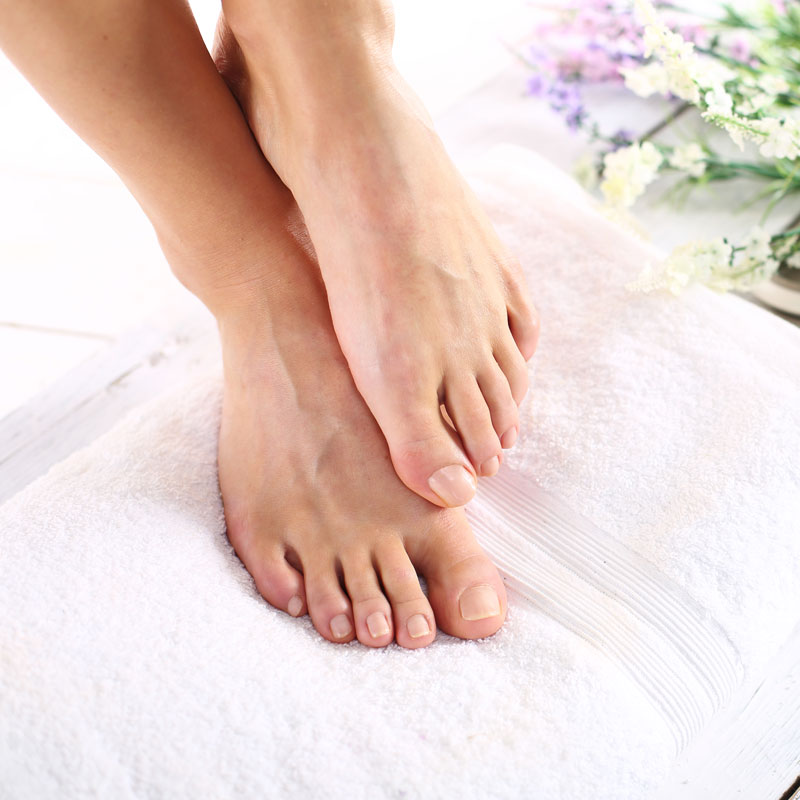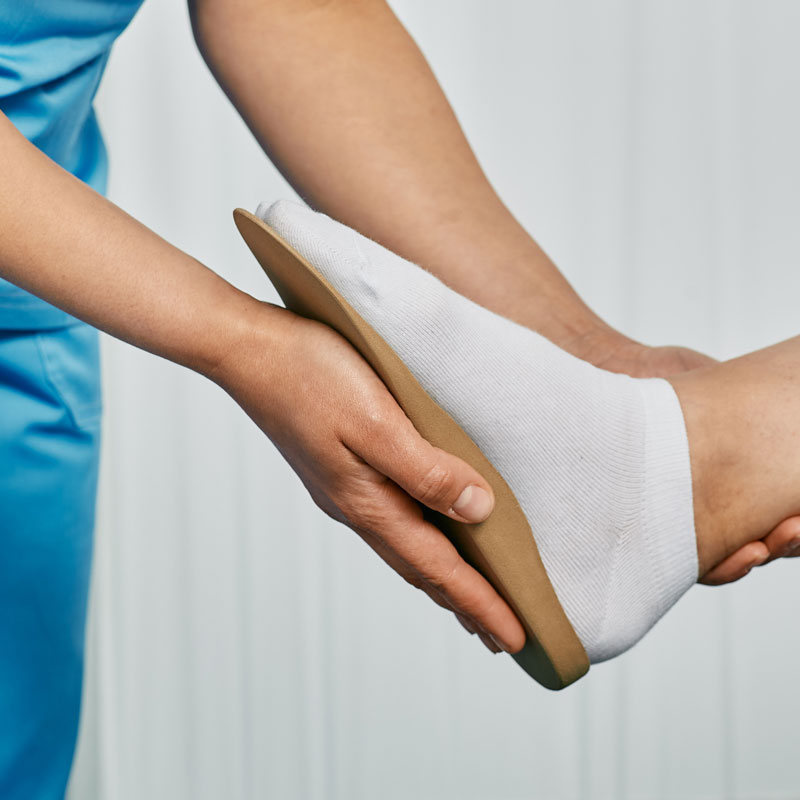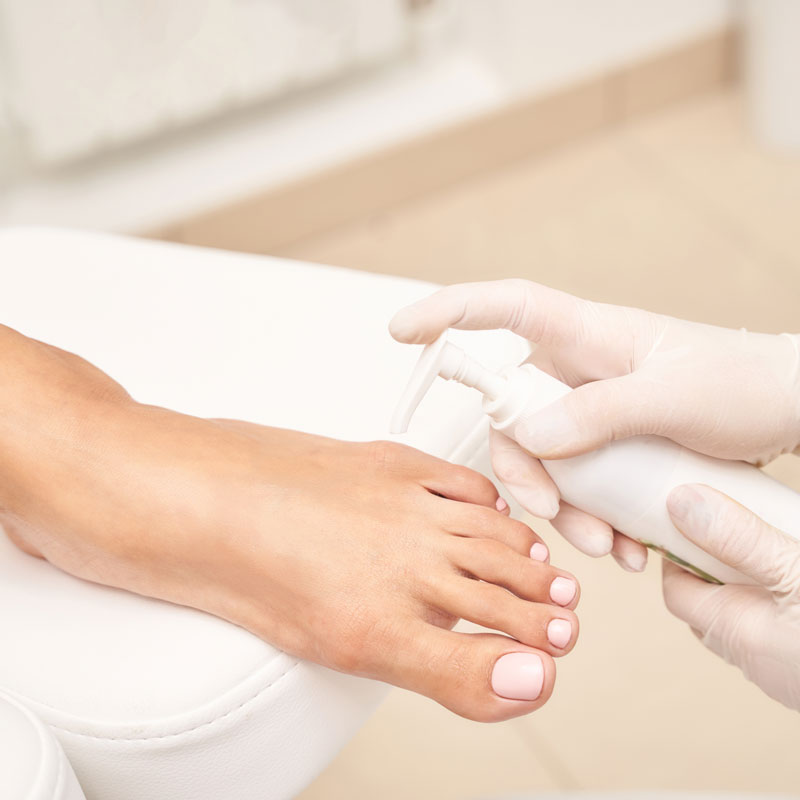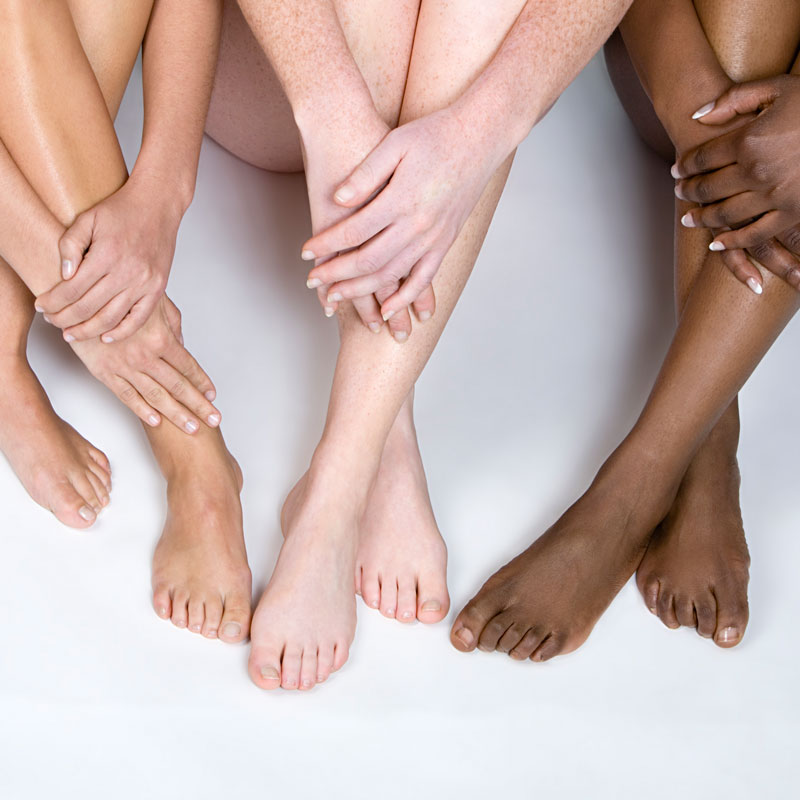Bunions
Identifying Bunions in Sugarland, TX
A bunion is an enlargement of the joint at the base of the big toe — the metatarsophalangeal (MTP) joint that forms when the bone or tissue at the big toe joint moves out of place. This forces the toe to bend toward the others, causing an often painful lump of bone on the foot. Since this joint carries a lot of the body’s weight while walking, bunions can cause extreme pain if left untreated. The MTP joint itself may become stiff and sore, making even the wearing of shoes difficult or impossible. A bunion — from the Latin “bunio,” meaning enlargement — can also occur on the outside of the foot along the little toe, where it is called a “bunionette” or “tailor’s bunion.”

Bunion Symptoms
The podiatrists at Advanced Foot & Ankle Specialists have a tremendous amount of experience diagnosing and treating bunions. Some of the most common symptoms of bunions include:
- Development of a firm bump on the outside edge of the foot, at the base of the big toe.
- Redness, swelling, or pain at or near the MTP joint.
- Corns or other irritations caused by the overlap of the first and second toes.
- Restricted or painful motion of the big toe.
- How Do You Get a Bunion?
How Do You Get a Bunion?
Bunions form when the normal balance of forces exerted on the joints and tendons of the foot becomes disrupted. This can lead to instability in the joint and cause deformity. They are brought about by years of abnormal motion and pressure over the MTP joint. These are symptoms of faulty foot development and are usually caused by the way we walk, and our inherited foot type, our shoes, or other sources. Although bunions tend to run in families, the foot type is passed down — not the bunion. Parents who suffer from poor foot mechanics can pass their problematic foot type on to their children, who in turn are prone to developing bunions.
Other causes of bunions are foot injuries, neuromuscular disorders, or congenital deformities. People who suffer from flat feet or low arches are also prone to developing these problems, as are arthritic patients and those with inflammatory joint disease. Occupations placing undue stress on the feet are also a factor; ballet dancers, for instance, often develop the condition. Wearing overly tight shoes causes the toes to be squeezed together and is also a common factor, one that explains the high prevalence of the disorder among women.

What Can You Do for Nonsurgical Bunion Treatment?
Treatment options vary with the type and severity of each bunion, although identifying the deformity early in its development is important in avoiding surgery. Podiatric medical attention should be sought at the first indication of pain or discomfort because left untreated, bunions tend to get larger and more painful, making a nonsurgical treatment less of an option. The primary goal of most early treatment options is to relieve pressure on the bunion and halt the progression of the joint deformity.
- Apply a commercial, nonmedicated bunion pad around the bony prominence.
- Wear shoes with a wide and deep toe box.
- If your bunion becomes inflamed and painful, apply ice packs several times a day to reduce swelling.
- Avoid high-heeled shoes over two inches tall.
- See your podiatric physician if pain persists.

Trust the Bunion Experts
The podiatrists at Advanced Foot & Ankle Specialists in Sugar Land recommend the following options:
- Padding and Taping Often the first step in a treatment plan, padding the bunion minimizes pain and allows the patient to continue a normal, active life. Taping helps keep the foot in a normal position, thus reducing stress and pain.
- Medication Anti-inflammatory drugs and cortisone injections are often prescribed to ease the acute pain and inflammations caused by joint deformities.
- Physical therapy: Provides relief from inflammation and pain. Ultrasound therapy is a popular technique for treating bunions and their associated soft tissue involvement.
- Orthotics Shoe inserts may be useful in controlling foot function and may reduce symptoms and prevent worsening of the deformity.
Bunion Surgery Specialists in Sugar Land
When early treatments fail or the bunion progresses past the threshold for such options, bunion surgery may become necessary to relieve pressure and repair the toe joint. Several surgical procedures are available to the podiatric physician. The surgery will remove the bony enlargement, restore the normal alignment of the toe joint, and relieve pain.
A simple bunionectomy, in which only the bony prominence is removed, may be used for the less severe deformity. Severe bunions may require a more involved procedure, which includes cutting the bone and realigning the joint.
Recuperation takes time, and swelling and some discomfort are common for several weeks following surgery. Pain, however, is easily managed with medications prescribed by your podiatric physician.
Recuperation takes time, and swelling and some discomfort are common for several weeks following surgery. Pain, however, is easily managed with medications prescribed by your podiatric physician. At Advanced Foot & Ankle Specialists, a wide range of noninvasive bunion removal treatments is available, as well as sophisticated bunion surgery for those with advanced cases.

Signs You Need Bunion Surgery
If you have a bunion, it’s important that you visit a foot doctor. Our professional bunion treatment team has years of experience helping determine what kind of procedure you’ll need. Most bunions can be treated without surgery, though bunion surgery may be necessary if you exhibit the following signs:
- Difficulty Walking: If your bunions cause so much pain you have trouble walking or performing other everyday activities, surgery maybe your best option.
- Toe Stiffness: A normal big toe should bend and straighten without pain. If you are unable to move your toe, ask our foot doctor about surgery.
- Ineffective Conservative Treatment: Surgery should always be a last resort. Before surgery, our podiatrists will likely recommend special footwear, anti-inflammatory drugs, and other conservative treatments. If these treatments fail, surgery is your only option left.

Surgical Techniques for Bunions
Like most other aspects of medical science, bunion surgery has come a long way in recent years. The earlier you visit Advanced Foot & Ankle Specialists, the less invasive surgery you will require.
- Bunionectomy: Patients with relatively minor deformities may undergo a simple bunionectomy, during which the wayward bone section is cut and removed. A bunionectomy involves a minimal incision and allows the patient to quickly get back on his or her feet.
- Joint Realignment: If you have a more severe deformity, your foot doctor may opt for one of several different kinds of joint realignment. The utilization of a pain pump can help manage pain during surgery.
Schedule a Consultation Today
At Advanced Foot & Ankle Specialists, we have stayed up to date on the latest improvements in surgical techniques and place a premium on helping our patients get the care they need to be comfortable again.
For information and to schedule a consultation, call our bunion doctors in Sugar Land at 281-242-3338 today!